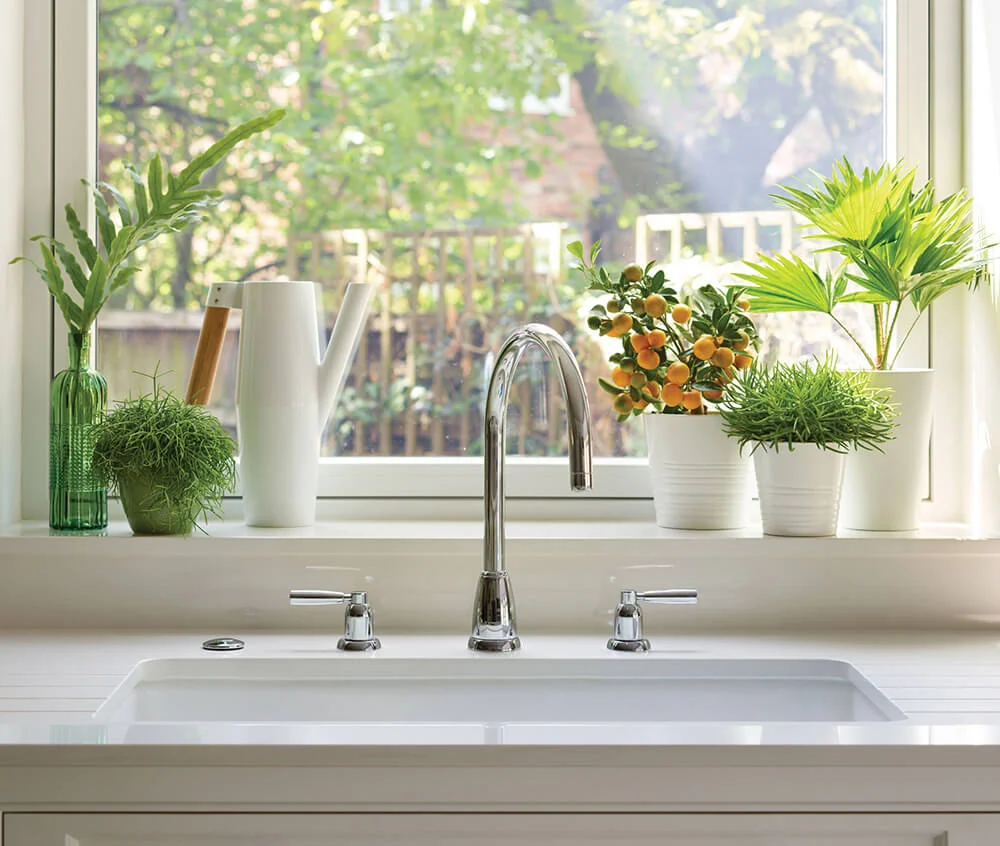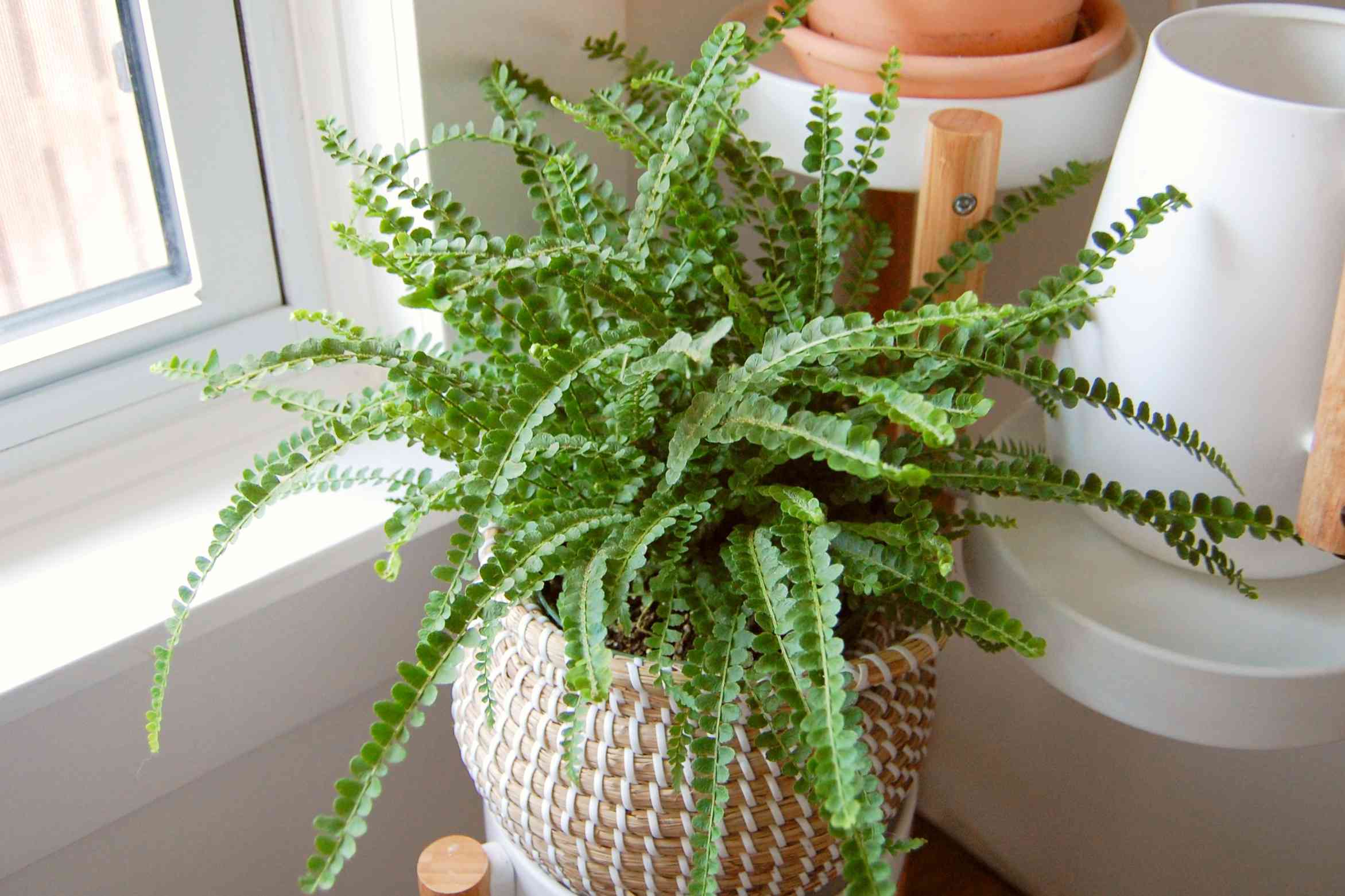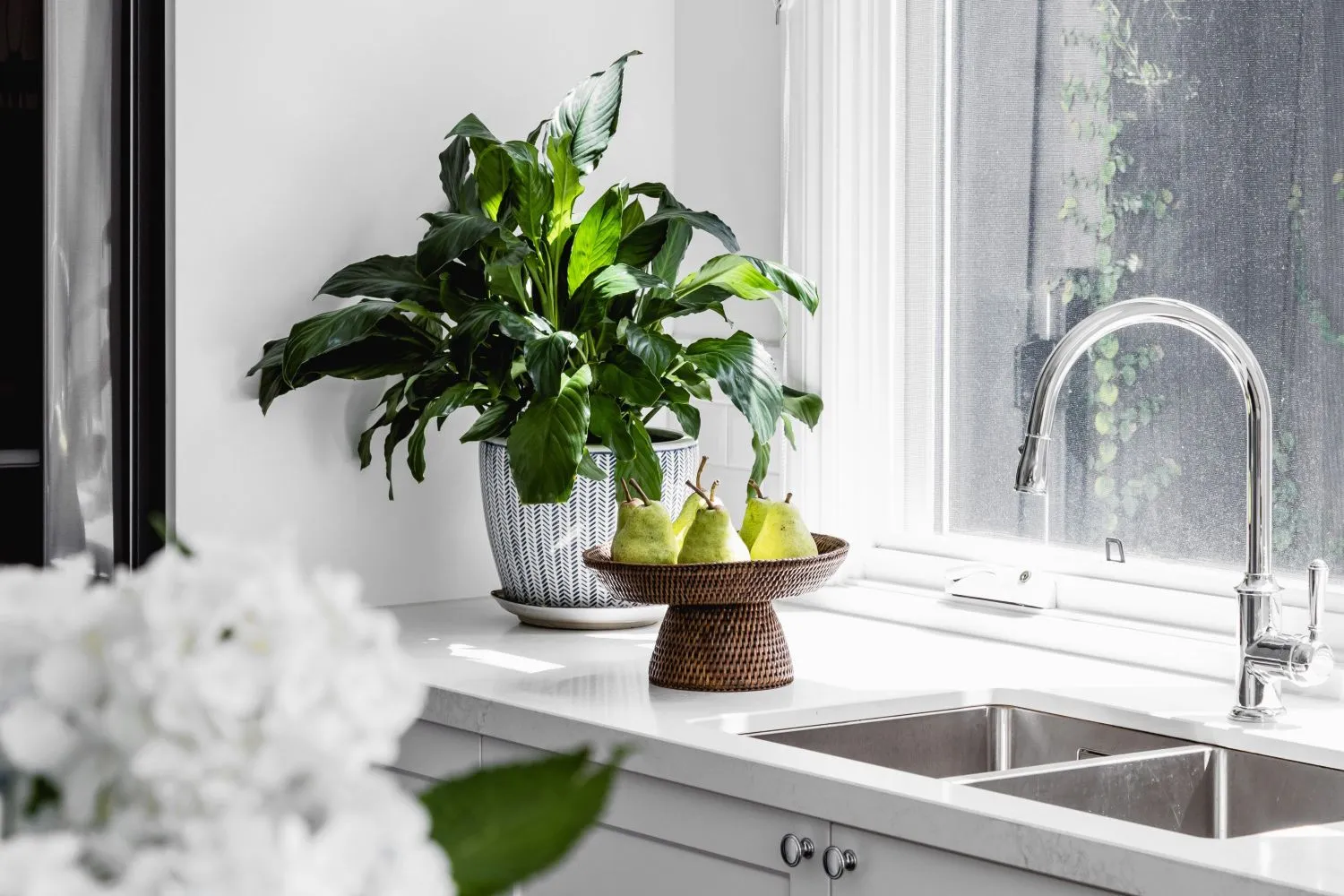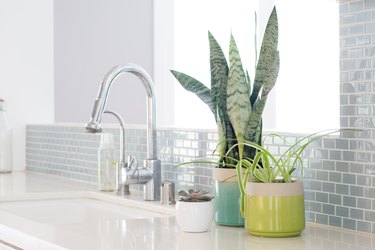Contents
Introduction
Welcome to the world of kitchen plants that love warmth and humidity! If you’ve ever wished for a lush, green oasis right in your kitchen, you’re in the right place. Kitchen plants do more than just brighten up your space—they can also improve air quality, add a splash of color, and even provide fresh herbs for your cooking. But not all plants are created equal when it comes to thriving in the warm, steamy environment of your kitchen.
Why does your kitchen make such a perfect home for certain plants? Well, kitchens are naturally warm and humid places, thanks to cooking and dishwashing. These conditions can be a dream come true for some plants, but a nightmare for others. It’s like finding the perfect pair of shoes—some plants just fit better in your kitchen’s climate than others.
In this guide, we’ll dive into the best plants that not only survive but truly thrive in your kitchen’s warm and humid environment. We’ll talk about herbs that can add fresh flavors to your dishes, tropical beauties that bring a touch of the exotic, and even some edible plants that can be a fun addition to your meals. Whether you have a sunny windowsill or a cozy corner with a bit of shade, there’s a plant out there that will love your kitchen as much as you do.
So, if you’re ready to turn your kitchen into a green paradise, keep reading! We’ll help you pick the perfect plants that will grow lush and healthy, making your kitchen a more inviting and vibrant space.
Understanding Your Kitchen Environment
Before we dive into the best plants for your kitchen, let’s get to know your kitchen’s unique environment. Understanding what makes your kitchen a perfect or not-so-perfect place for plants is key to picking the right ones.
Warm Conditions
Think of your kitchen as a cozy little greenhouse. When you’re cooking, your kitchen gets warm and steamy, thanks to all that heat from the stove and oven. Plants that thrive in warm conditions are going to love this. These plants are used to temperatures that stay on the toasty side, so they’ll be right at home in your kitchen. Just be mindful of extreme temperature changes—plants prefer a steady climate, and sudden cold drafts or overheating can stress them out.
Humidity Levels
Kitchens are naturally humid places. Every time you boil water or run the dishwasher, you’re adding moisture to the air. This is fantastic news for many plants! Plants that love humidity will soak up the moisture from the air, which helps them stay healthy and vibrant. If your kitchen’s humidity level is on the higher side, you’ve got a great environment for plants that thrive in such conditions. If you find the air is too dry, though, don’t worry—there are easy ways to boost humidity to keep your plants happy.
Light Availability
Now, let’s chat about light. Most kitchens get a good amount of natural light, especially if you have a window or two. However, the amount of light can vary depending on where your kitchen is located and how much direct sunlight it gets. Plants have different light needs, so it’s important to match them to the light conditions in your kitchen. Some plants are happy with just a bit of indirect light, while others need more sun. If natural light is scarce, you can always supplement with artificial grow lights to keep your plants thriving.

By understanding these three key aspects—warm conditions, humidity levels, and light availability—you’ll be better equipped to choose the perfect plants for your kitchen. So, take a look around your space and get ready to bring in some greenery that will flourish in your home’s unique environment!
Ideal Plants for Warm, Humid Kitchens
Now that we’ve covered what makes your kitchen a great spot for plants, let’s dive into the best choices for your warm, humid haven. Whether you’re a seasoned plant enthusiast or just starting out, these plants are perfect for thriving in your kitchen’s cozy environment.
Herbs
If you love cooking with fresh herbs, your kitchen is the perfect place to grow them. Not only do they add flavor to your dishes, but they also make your kitchen smell amazing.
- Basil
Basil is a superstar in the herb world, and it absolutely loves warm, humid conditions. It thrives in the heat and needs plenty of moisture to keep its leaves lush and green. Plus, having a basil plant on hand means you can easily add fresh basil to your pasta, salads, and more.
- Mint
Mint is another herb that adores moist environments. It’s practically a kitchen plant’s dream! Mint grows quickly and can be used in a variety of dishes, from refreshing salads to soothing teas. Just make sure to give it a nice, big pot—it likes to spread out.
- Cilantro
Cilantro thrives in warm weather and loves a bit of humidity. It’s great for adding a fresh, zesty flavor to dishes like salsa and tacos. Plus, cilantro is pretty easy to grow and doesn’t require too much fuss.
Tropical Plants
Tropical plants bring a touch of exotic flair to your kitchen and are right at home in the warm, humid conditions you’re providing.
- Spider Plant (Chlorophytum comosum)
The spider plant is a classic choice for kitchens. It’s low-maintenance and can tolerate the indirect light and humidity of your kitchen. With its arching leaves and tiny “babies,” it adds a bit of fun to your plant collection.
- Boston Fern (Nephrolepis exaltata)
Boston ferns are fantastic for humid environments. They love the moisture and indirect light, making them a great fit for your kitchen. These ferns have delicate, feathery fronds that add a lush, green touch to any space.

- Philodendron
Philodendrons are versatile and thrive in the warm, humid conditions typical of a kitchen. They come in various types, each with unique leaf shapes and sizes, so you can pick one that suits your style. They’re also pretty easy to care for, making them perfect for beginners.
Edible Plants
If you’re interested in growing something you can eat, these edible plants are fantastic choices for your kitchen.
- Lemongrass
Lemongrass loves warmth and moisture, making it ideal for a kitchen garden. It’s great for adding a citrusy kick to soups and stir-fries. Plus, growing lemongrass is a fun way to add fresh ingredients to your culinary adventures.
- Chili Peppers
Chili peppers thrive in warm, humid conditions and are perfect for adding a spicy punch to your meals. They’re relatively easy to grow and can be grown in pots or containers, making them a flexible choice for your kitchen.
With these plant options, you can create a vibrant and functional garden right in your kitchen. Whether you’re looking to spice up your cooking with fresh herbs or add some tropical charm to your space, there’s a perfect plant out there for you. Happy planting!
Care and Maintenance Tips
Now that you’ve picked out the perfect plants for your warm, humid kitchen, let’s talk about how to keep them thriving. Proper care and maintenance are key to ensuring your plants stay healthy and vibrant. Don’t worry—keeping your kitchen garden in tip-top shape is easier than you might think!
Watering
Plants in your kitchen will love the warm, humid environment, but they still need a bit of attention when it comes to watering. Here’s how to keep them happy:
- Consistency is Key
Most kitchen plants like their soil to stay consistently moist, but not soggy. Check the soil regularly by sticking your finger about an inch deep. If it feels dry, it’s time to water. If it’s still moist, wait a bit longer.
- Drainage Matters
Make sure your pots have good drainage to prevent water from sitting at the bottom. This helps avoid root rot, which can be a problem if the soil is too wet. Use pots with drainage holes or add a layer of gravel at the bottom to help with drainage.
Fertilizing
Feeding your plants is like giving them a little extra energy boost. Here’s how to do it right:
- Choose the Right Fertilizer
Use a balanced, all-purpose fertilizer to keep your plants well-nourished. You can find these at garden centers or online. Follow the instructions on the package for the right amount and frequency.
- Don’t Overdo It
More isn’t always better when it comes to fertilizer. Over-fertilizing can harm your plants, so stick to the recommended amounts. Usually, feeding once a month is sufficient for most indoor plants.
Pruning and Trimming
Pruning helps keep your plants looking their best and encourages healthy growth. Here’s what you need to know:
- Remove Dead or Yellowing Leaves
Regularly trim off any dead or yellowing leaves. This helps the plant focus its energy on new, healthy growth and keeps the plant looking tidy.
- Encourage Bushier Growth
For plants that tend to get leggy, like basil or mint, pinching back the tips can encourage a bushier shape. Just use clean, sharp scissors to make the cuts, and your plant will grow more densely.
Pest Control
Even in a warm, humid kitchen, pests can sometimes be a problem. Here’s how to keep them at bay:
- Regular Checks
Keep an eye out for common pests like spider mites, aphids, or mealybugs. Inspect your plants regularly and remove any pests you find.
- Natural Remedies
If you spot pests, try using natural remedies like neem oil or insecticidal soap. These are generally safe for most plants and effective at getting rid of unwanted critters. Always follow the instructions on the product to avoid harming your plants.
With these care and maintenance tips, your kitchen plants will be in great shape and will add beauty and freshness to your space. Regular attention and a little bit of love will go a long way in keeping your green friends happy and healthy!
Common Issues and Solutions
Even the best plant enthusiasts encounter a few bumps along the road. Knowing how to handle common issues can make all the difference in keeping your kitchen garden thriving. Here’s how to tackle some typical problems you might face:
Humidity Challenges
Kitchens are usually pretty humid, but sometimes the levels might fluctuate or be too high, causing issues for your plants. Here’s what to do:
- Mold and Mildew
High humidity can sometimes lead to mold or mildew on your plants. If you notice any white, powdery spots or a musty smell, it’s a sign that humidity might be too high. To combat this, improve air circulation around your plants by spacing them out and using a fan if needed. You can also gently wipe affected areas with a damp cloth.
- Maintaining Optimal Humidity
If you find the humidity is too low, especially in colder months, consider adding a humidity tray. Simply place a shallow tray filled with water and pebbles under your pots. As the water evaporates, it will increase the humidity around your plants. Another option is to use a room humidifier.
Temperature Fluctuations
Your kitchen’s temperature can vary, especially if you’re cooking a lot or if the weather changes outside. Here’s how to manage these fluctuations:
- Avoid Drafts
Keep your plants away from cold drafts or sudden temperature changes. This means keeping them away from windows that might open to chilly air or near heaters that can get too hot. Consistent temperatures are key to keeping plants happy.
- Monitor Temperature
Use a thermometer to keep track of the temperature around your plants. Most kitchen plants prefer temperatures between 65°F and 75°F (18°C to 24°C). If temperatures swing too much, try to stabilize them by adjusting your kitchen’s heating or cooling systems.

Light Limitations
Not every kitchen is bathed in sunlight all day long. If your kitchen has limited natural light, don’t worry—there are ways to help your plants get the light they need:
- Supplemental Lighting
If your kitchen doesn’t get enough sunlight, consider using grow lights. These special lights mimic natural sunlight and can help plants thrive even in low-light conditions. Position the lights close to your plants, and follow the manufacturer’s guidelines for the right duration and distance.
- Choose Low-Light Plants
Some plants are better suited for low-light conditions. Opt for varieties that thrive in indirect light if your kitchen isn’t very sunny. Plants like the spider plant and Boston fern are great choices for lower-light environments.
By addressing these common issues with practical solutions, you can ensure your kitchen plants continue to flourish and contribute to a vibrant, green space. Regular care and a bit of troubleshooting will keep your indoor garden looking its best!
Decorating with Kitchen Plants
Turning your kitchen into a green paradise isn’t just about picking the right plants—it’s also about how you arrange and showcase them. A well-decorated plant display can elevate the look of your kitchen and make it feel more inviting. Here’s how to make the most of your kitchen plants:
Placement Tips
Finding the perfect spot for your plants is crucial for their health and for enhancing your kitchen’s decor. Here’s how to choose the best locations:
- Maximize Natural Light
Place light-loving plants near windows where they can soak up the sun. For those that prefer less light, choose shadier spots or areas with indirect light. If your kitchen has a sunny windowsill, it’s an ideal place for herbs like basil and cilantro.
- Consider Space and Accessibility
Think about how much space you have and how accessible your plants are. Small plants can fit nicely on countertops or shelves, while larger plants might be better placed on the floor or on a plant stand. Make sure you can easily reach them for watering and maintenance.
Pot and Container Choices
The right pot can make a big difference in both plant health and kitchen aesthetics. Here’s what to look for:
- Choose Pots with Drainage
Always select pots with drainage holes to prevent water from pooling at the bottom, which can lead to root rot. You can also use decorative saucers underneath to catch excess water.
- Match Your Decor
Pick pots that complement your kitchen’s style. Whether you prefer sleek, modern containers or rustic, ceramic pots, choose something that fits with your kitchen’s look. You can even use fun, colorful pots to add a splash of personality.
Combining Plants
Creating groupings of plants can make a striking visual impact. Here’s how to combine them effectively:
- Mix Heights and Textures
Combine plants of different heights and textures to create a visually interesting arrangement. For example, pair a tall, dramatic plant like a philodendron with a smaller, bushier herb like mint. Mixing different leaf shapes and sizes adds depth and character.
- Create Plant Displays
Use shelves, stands, or hanging baskets to showcase multiple plants. Group plants together on a shelf or countertop for a lush, vibrant display. Hanging plants like spider plants can add greenery at eye level or above.
By following these tips, you can create a beautiful and functional plant display that enhances your kitchen’s ambiance. Whether you’re aiming for a lush, tropical feel or a fresh, herb-filled look, thoughtful placement and stylish containers will help your plants thrive and add charm to your space. Happy decorating!
Conclusion
You’ve reached the end of our guide to kitchen plants that thrive in a warm, humid environment, and I hope you’re feeling inspired! Bringing plants into your kitchen is more than just a trend; it’s a way to create a vibrant, inviting space where you can enjoy both beauty and functionality.
Recap of Benefits
Let’s recap why adding plants to your kitchen is such a great idea. First, plants like herbs, tropical varieties, and edible greens not only enhance your kitchen’s look but also serve practical purposes. Fresh herbs are perfect for cooking, tropical plants bring a touch of the exotic, and edible plants provide homegrown ingredients right at your fingertips. Plus, plants help improve air quality and add a bit of nature to your daily routine.
Encouragement to Start
So why wait? Now that you know which plants thrive in your kitchen’s warm and humid environment, it’s time to get started. Whether you’re a seasoned green thumb or new to plant care, there’s no better time than now to transform your kitchen into a lush, green oasis. Start with a few easy-to-care-for plants and see how they brighten up your space and your mood.
Remember, caring for plants can be a fun and rewarding hobby. With the right plants and a bit of love, you’ll create a space that’s not only beautiful but also uniquely yours. So go ahead, pick out your favorite plants, and start enjoying the benefits of a greener, more vibrant kitchen. Happy planting!



